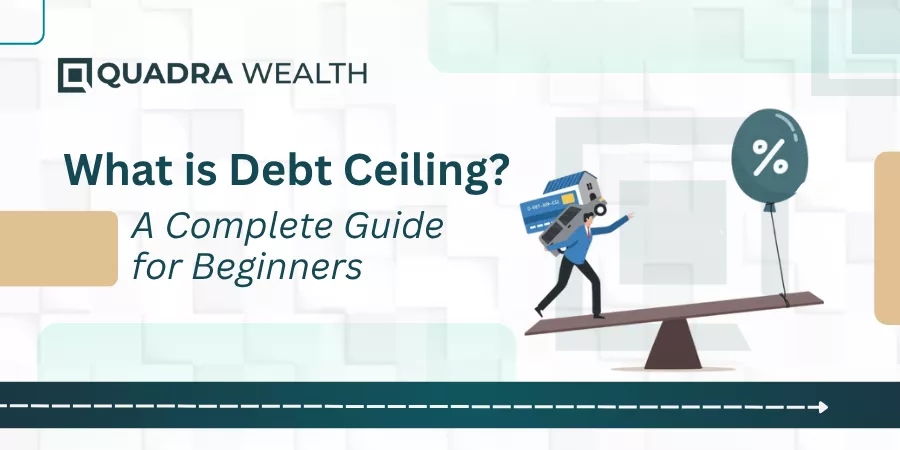Introduction
Jason Zweig famously said – “Investing is not about beating others at their game. It’s about controlling yourself at your own game.” but how much control you have when there’s limited access to information, complex financial products, higher market volatility, and higher transaction and management fees. As a retail investor, navigating these challenges can be tough and intimidating. Structured Products for Retail Investors can turn out to be positive as well as negative depending on the ultimate goal of the investor.
Moreover, with the growing innovation in technology and the finance world, retail inventors are looking for more sophisticated products to invest in, that can provide them with the desired flexibility and diversification along with higher returns and lesser risks.
Hence, structured products have become one of the topmost choices among retail investors as they provide unique customization, wherein they set the conditions and customize it to meet their financial goals. The option that other traditional investments fail to offer.
Structured Products- Meaning and Conceptualization explained
Structured products, more commonly known as structured notes are hybrid instruments that combine an optimal mix of debt components with that of derivatives.
Here, we mean to say that the debt component can be in the form of a promissory note, bond, or a mortgage and this debt is linked to the underlying derivative asset. The underlying asset can be shares or securities, independent stocks, commodities, and currencies, to name a few.
The debt provides downside protection to investor’s capital while the returns on investment depend on the performance of the underlying assets the notes are linked to.
Therefore, investing in structured products helps you customize your wealth basket with a wide range of financial instruments. The upside participation or downside buffers help mitigate capital losses to a greater extent. Your returns on investment are impacted by changes in market conditions as well.
Structured products for retail investors- types explained
What are the different types of Structured products for retail investors?
Well, let us have a look into the same:
Principal Protected Notes or PPNs
As the name suggests, principal-protected notes or PPNs are exclusive notes wherein the promissory bond includes the stipulation that the investor’s capital amount or principal amount will be paid out during the term of the investment.
This is regardless of how the underlying assets perform in the equity or stock exchange market. PPNs are usually linked to stocks, market indexes, or currencies. These notes provide upside gains over the investment portfolio based on the underlying performance of the assets, which these notes are linked. In a crux, capital protection is what PPNs stand for.
Equity Linked Notes or ELNs
ELNs are structured notes that typically work the same way shares or securities work in the equity market. The notes are linked to stock indexes or commodity values.
These products offer more attractive yields/payoffs as compared to traditional bonds or fixed-income securities. Although investors receive fixed interest returns, further upside gains from the potential investment depend on the performance of the underliers the notes are linked to.
In a nutshell, it can fairly be concluded that these notes provide higher returns over traditional investing options but come to you at a higher risk after all.
Reverse Convertibles
Reverse Convertibles are notes that are linked to specific underlying assets like stocks, commodities, or other derivative components that belong to the equity market.
These are short-term notes that also provide attractive coupon payouts to investors. However, as the notes are linked to stock values, certain threshold limits or barrier levels are set on the initial values or strike prices of the underliers.
When the performance of the stock or underlying stocks goes below the threshold or barrier limits as have been set, then the investors may not get their capital investment or principal money in cash. Instead, the investment value is converted into shares or stocks.
Therefore the notes convert into stocks that are paid out to investors instead of the principal amount which is why the notes are also called as reverse-convertibles.
And, if the stocks reach the barrier limits or go beyond, then investors get the principal amount and coupons in the form of a direct credit that goes into the investor’s bank accounts.
Auto-callable structured notes
Auto-callable notes are structured notes wherein the notes are linked to asset values or stock indexes. However, the product issuing firms add a special auto-call feature wherein the notes get redeemed once the autocall specifications are met. Therefore, the notes can be redeemed even before the term of maturity.
The performance of underliers is monitored during specific assessment periods also known as observation periods or observation dates. If the values of the assets reach par values or go higher above the initial purchase points or barriers, then the notes are autocalled and investors get their principal money and coupon payments as the return of investments these notes gather.
Dual currency notes
These are structured notes that typically perform hedging between two different currency values. For instance, you may have the notes issued in US dollars while the performance of the notes relies upon the performance of euros, and the interest payouts are calculated accordingly. The currency fluctuations earn profit margins for retail investors who invest in dual currency notes.
At the time of maturity, the investor may receive his principal investment in the form of dollars or euros depending on whichever currency performs better in the market.
Credit-linked Notes
Credit-linked notes are notes that are linked to the credit performance of a financial institution company or multiple product firms. Here, the performance in the credibility or credit rating of product issuers and their linked firms factor into account to pay investors capital and returns on the investment portfolios, on the whole.
If the credit rating of the product issuers and their sister concerns fare well, then investors get stable returns on investment from these notes. On the contrary, if the product issuing firm or its affiliated consoles defaults or goes busted, then investors may lose out on the partial or complete value of their initial investment.
What are the considerations retail investors must follow before investing in structured products?
Let us deep-dive into some of the main considerations retail investors may have to consider when they want to invest in structured products. Helping you get a run-down into the same:
Knowing about the complexity of the product
As you have seen already, structured products offer different types of configurations that are customized according to an investor’s risk tolerance. And, as the notes combine debt with equity, there are no specific formulations as to how the investment values or their returns are being calculated.
Therefore, investors must thoroughly gauge the complexity of each structured note after carefully weighing its pros and cons. In other words, one must analyze the risk factors of these notes beforehand and not sign in on the dotted lines in an impulsive mode. In a nutshell, these products provide capital protection against the upside gains of performing assets.
Liquidity
t is to be understood that each structured product is designed or tailormade based on an independent investor’s risk profile. Therefore, finding the right buyers for these products may be a tricky ball game after all.
And even if investors or sellers plan to dispose of the notes, they may not receive a value that commensurate with their initial level of investment. As the notes are linked to the performance of underlying assets or securities, factors like:
- Volatility of market conditions
- Interest rate fluctuations
- Sudden developments impacting the underliers
can have a bearing on how much money an investor would realize if he were to sell his notes in a secondary market. The investor may have to lose a partial sum of his capital in most distress-sale circumstances.
On the contra, converting the investment into shares or stocks is a more viable option as one can reap the benefits of the same if the shares or stock options perform well in the market.
Complexity of the fee structure
The processing fees and implicit costs may be on the slightly higher side with respect to high-end structured products as compared to regular forms of investments like ETFs, mutual funds, or bonds. The fee structure for notes with high-paying asset classes is curated in a primary market and therefore varies on a case-by-case scenario and does not remain fixed.
Again, the potential return is based on the performance of underlying assets vis-a-vis the investor’s level of risk exposure on the whole.
Tax implications
The income or returns on structured notes differ as the structured notes are customized based on the independent requirements of every investor. Therefore, the tax implications can also vary significantly from one product to another.
You should have a word with a renowned tax consultant or a tax advisor before you choose structured notes as part of your investment portfolio. Otherwise, things may get complicated in the long run.
Credit issuer risks
As is already seen, structured notes come to you with a whole fleet of credit, market, and liquidity risks, to name a few. On a similar note, the contingent values of a structured product also depend on how robust the issuing company is.
Sometimes the credit-issuing company may get busted. Take the example of Lehman Brothers. When their company signed up for insolvency, their structured notes were rendered valueless.
Therefore, the investors can also lose a significant portion of their capital investment if the credit-issuing company is at risk. In other words, you have the counterparty risks that remain higher on the cards.
You must therefore check for the credibility of the product issuer before taking a structured note from the issuing company.
Highlighting tips on how to choose retail-friendly structured products that can cover your investment portfolio
Now, we move on to the next important segment of this write-up. We will look at tips on how to choose retail-friendly investment products. Helping you on a run-down into the same:
Get a recommendation from a financial advisor
As a first-time investor, you have so many options to choose from. The list includes debt instruments, structured notes, stocks, equities, indices, credit notes, mortgage bonds, fixed deposits, futures, commodities, options, and a whole lot of them. It can be quite overwhelming as to what to choose from.
Therefore, it is always a better idea to get first-hand recommendations from a financial advisor as to how you can come up with a robust investment plan. Understanding bullish or bearish market trends can also help you with risk tolerance to a greater extent. The ROI provides investors with wide exposure to different market segments.
Compute your workings on dummy investment sites to get hands-on experience.
You do not want to fall into the risk of losing your money on a live trading or investing platform. Therefore, it is always a better idea to learn your workings before you start investing your money on a trading or investing platform.
Quite a lot of investment firms allow their users to download dummy platforms wherein you can try and test your moves. This can be a learning curve for you before you are confident enough to trade at live markets.
Having a diversified investment portfolio
You may have heard of the proverbial saying ‘Do not put all your eggs inside the same basket!’. The same proverb holds good while you are choosing investment plans too.
Retail investors can have a diversified product that offers that comprises debts, equities, mortgage bonds, real-estate shares, and so on. This way, the loss of one product can offset the gains in another product.
In a nutshell, having a wealth basket comprising a versatile range of financial products can be your key to wealth accumulation in the long run.
Knowing investments that offer tax waivers
It is always better you know what type of investments can offer you tax-saving benefits. This way, you can arrive at your investment value sooner and you can also file returns to get tax redemption benefits from the same.
To do so, you must also pick investments that come to you with lucrative tax-saving benefits. You can get guidance from asset managers on this.
Creation of cheat sheets for structured investment products
The last and the final step is to put everything together. You can create risk-return templates and make cheat sheets on Structure Investment products so that you mitigate the financial crisis on investment products.
You do not want to be contacting people all over again. Therefore, these cheat sheets with info well-documented can be a referencing guide for you just in case you get stuck.
Key Takeaways
Retail investors have different choices as to where they can invest in. With so many financial products that are mushrooming in the market, it may be hard to come up with the right investment plan.
An investor must have a look at market risk, liquidity, and the creditworthiness of the issuing company before he/she decides to choose an investment plan.
With financial firms offering online and offline guidance, choosing the right investment plan need not be a hassle.






